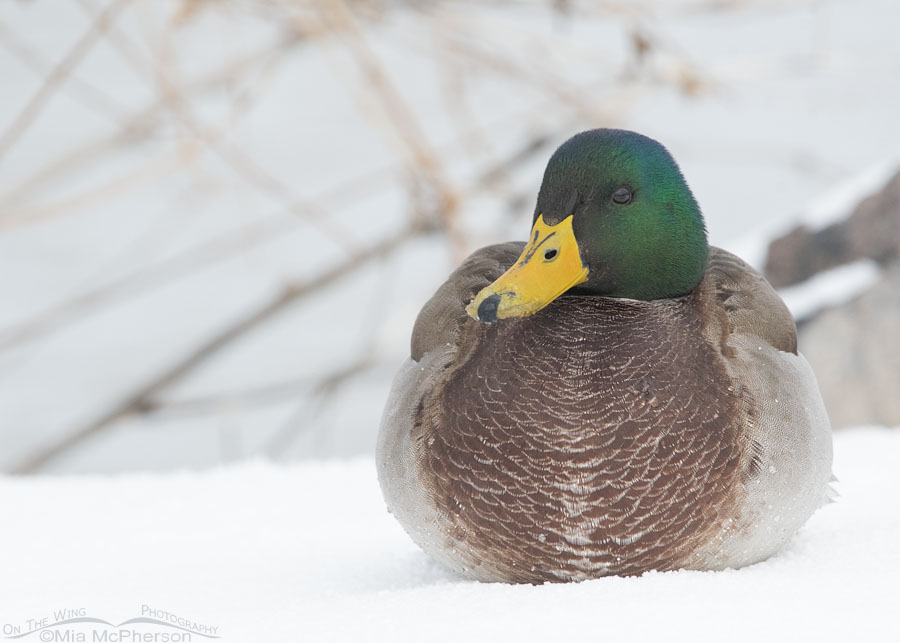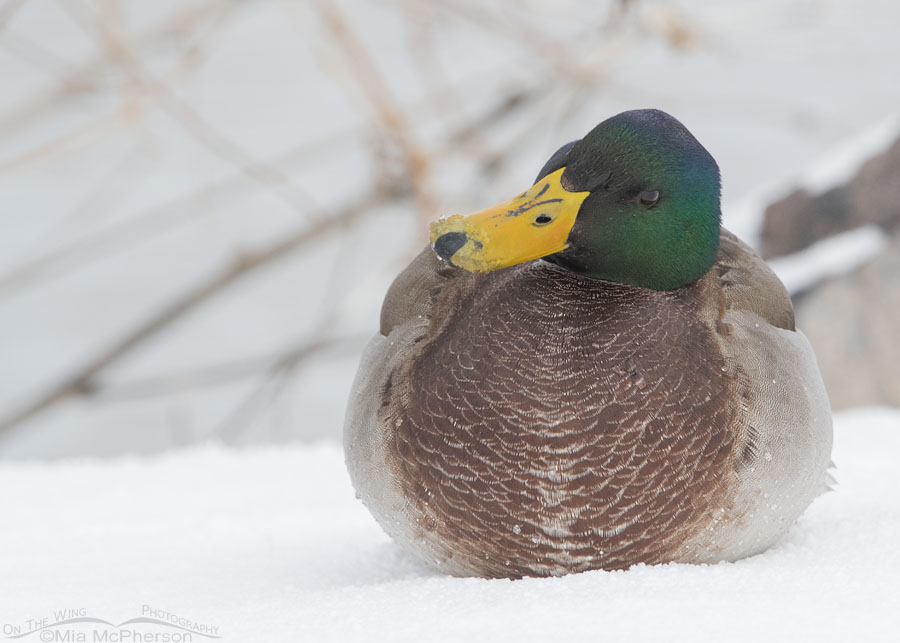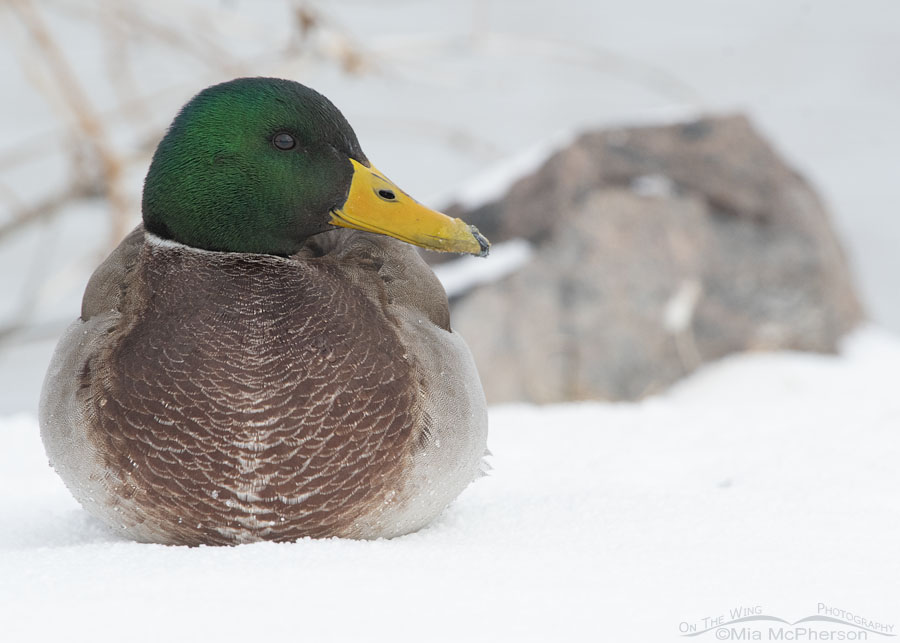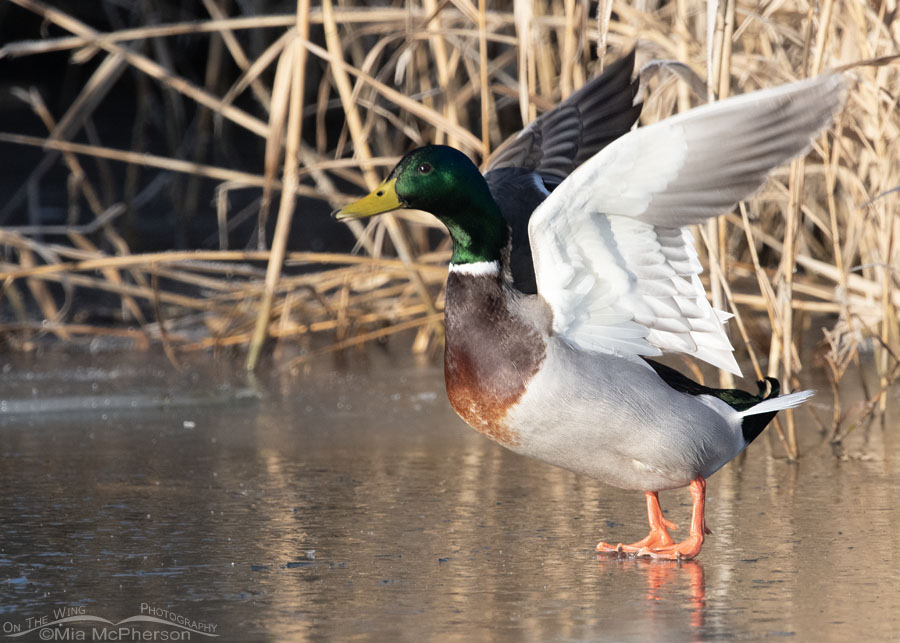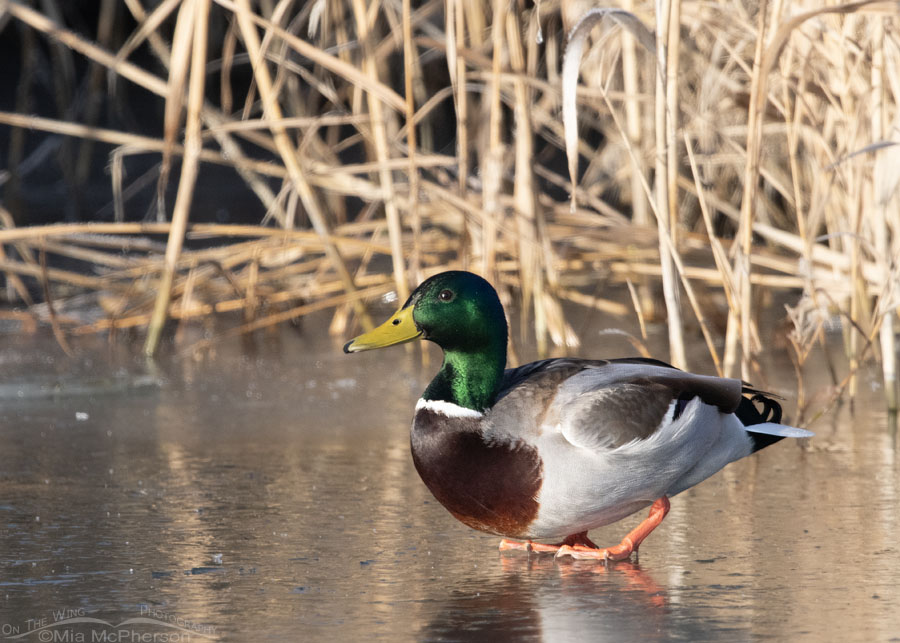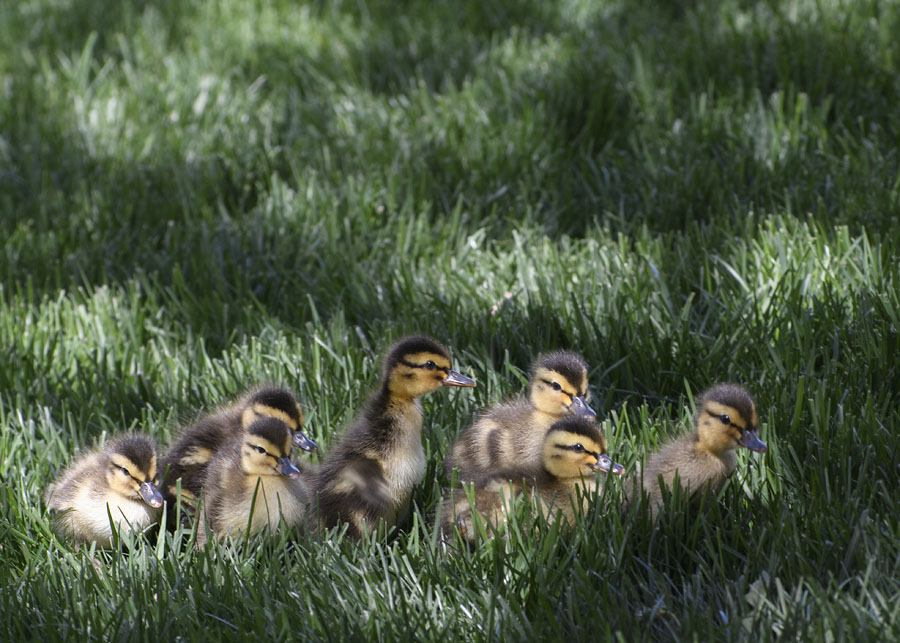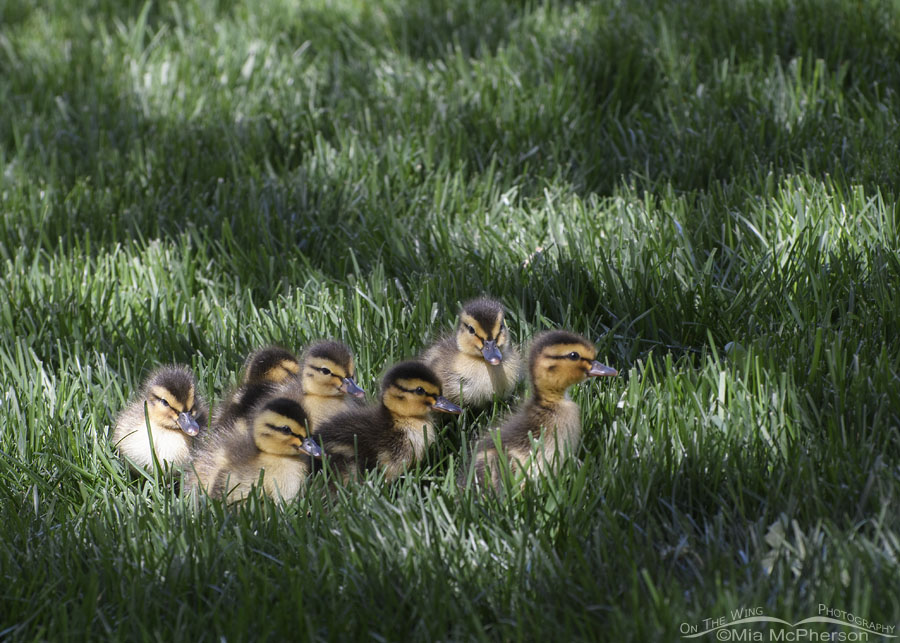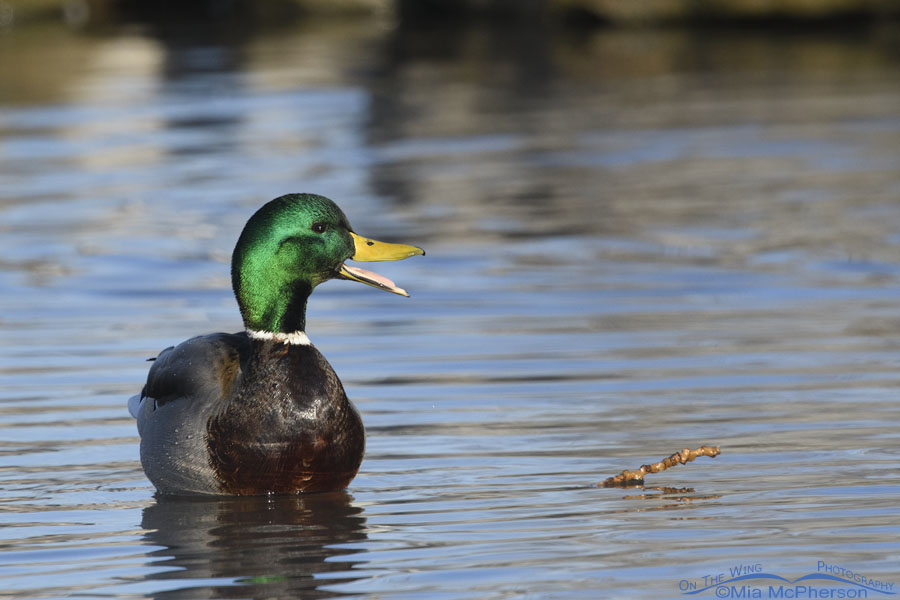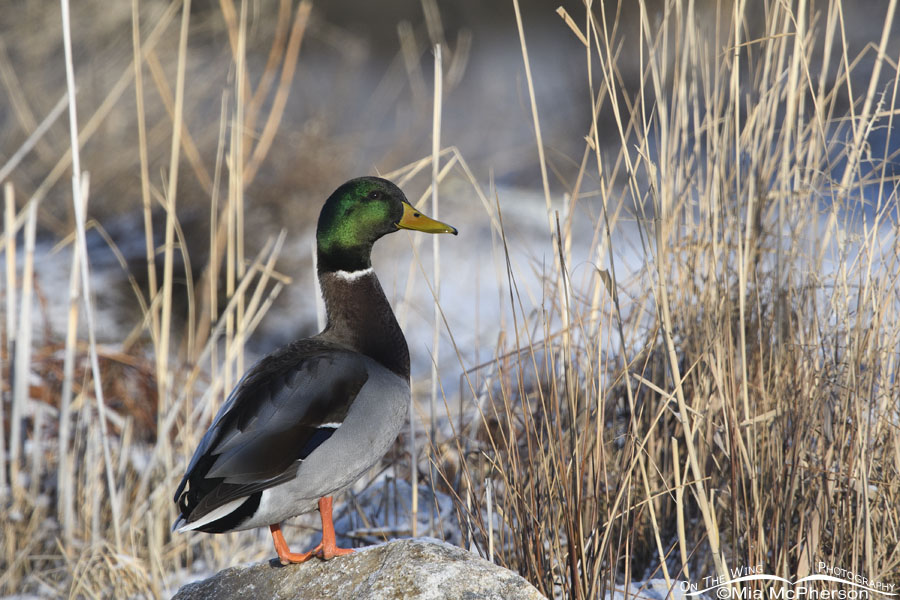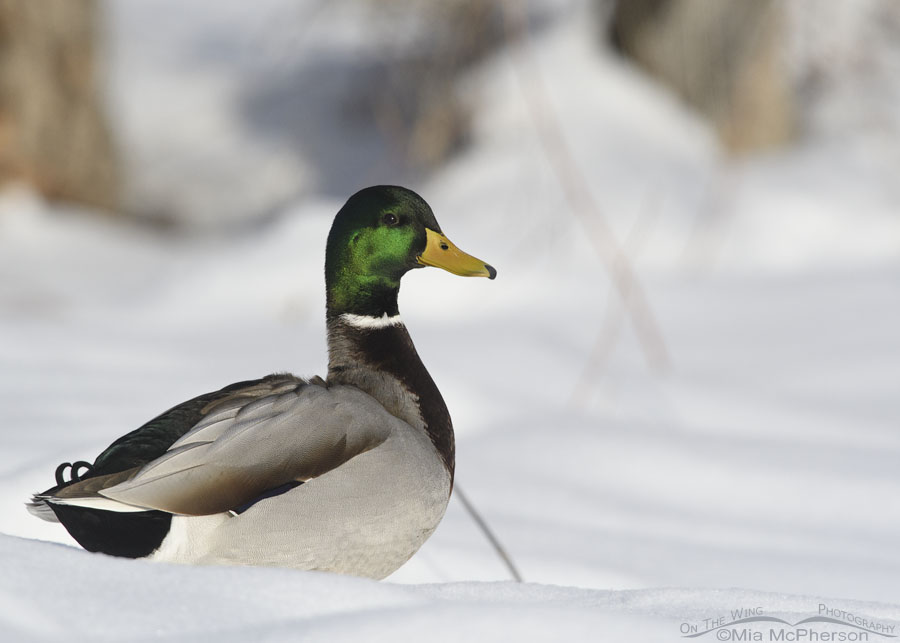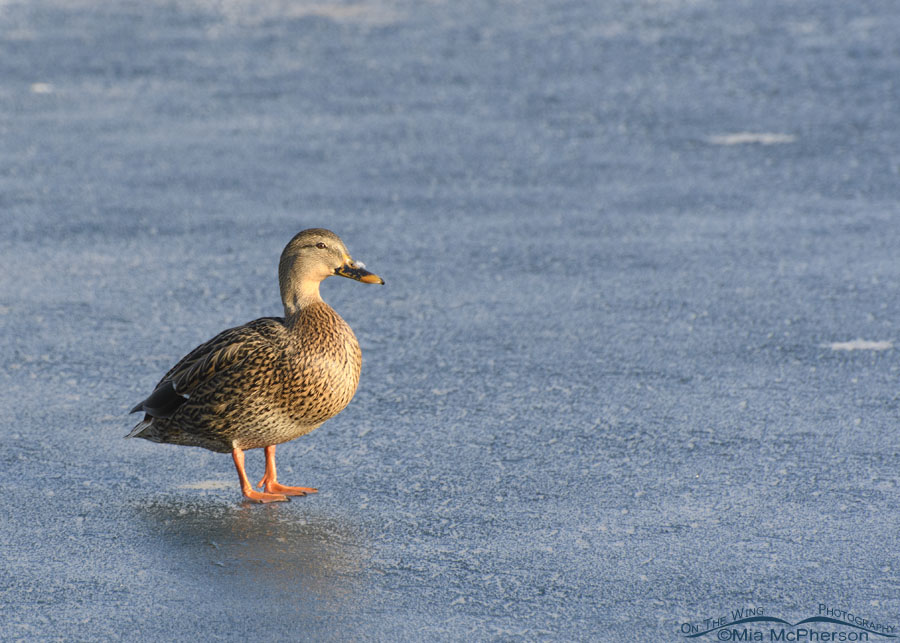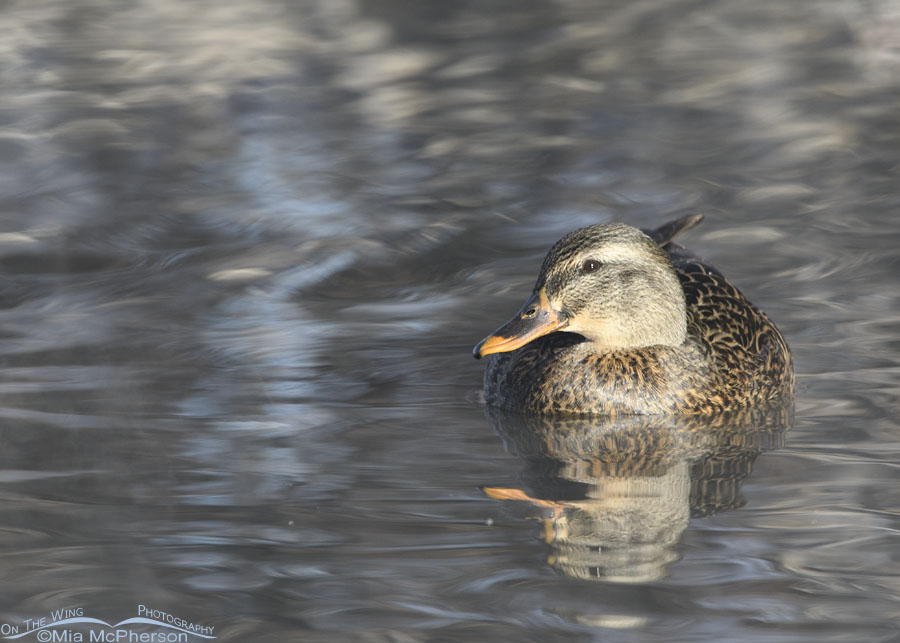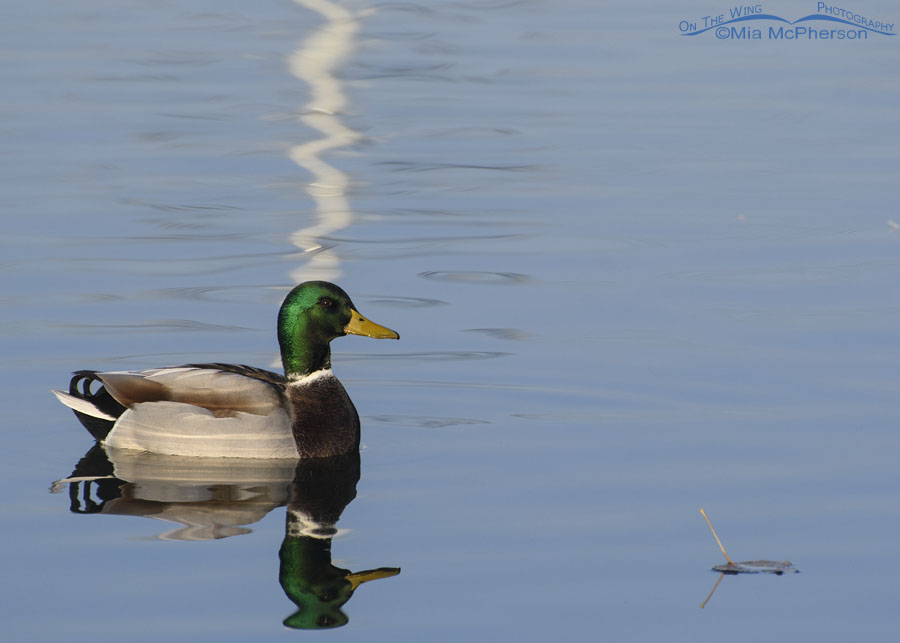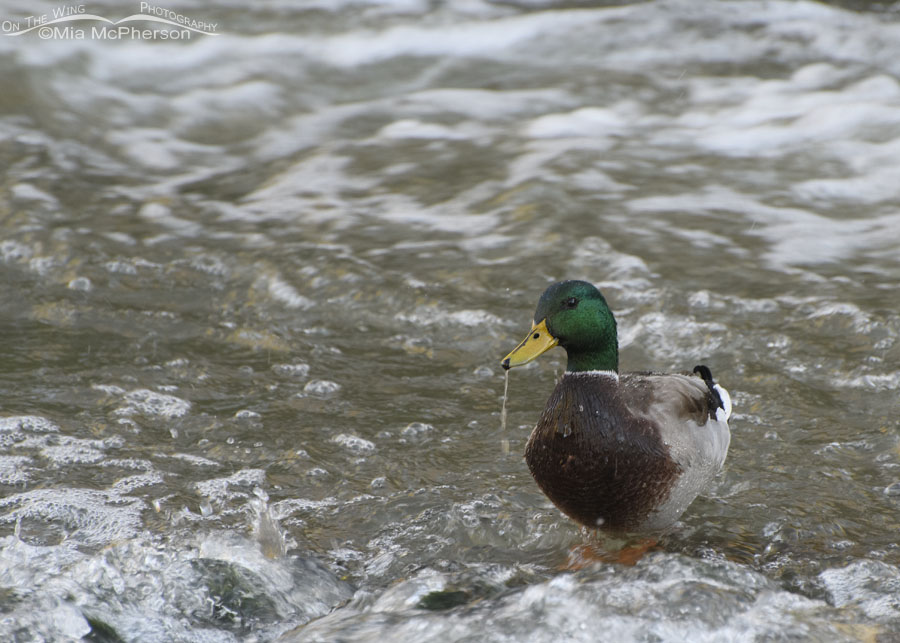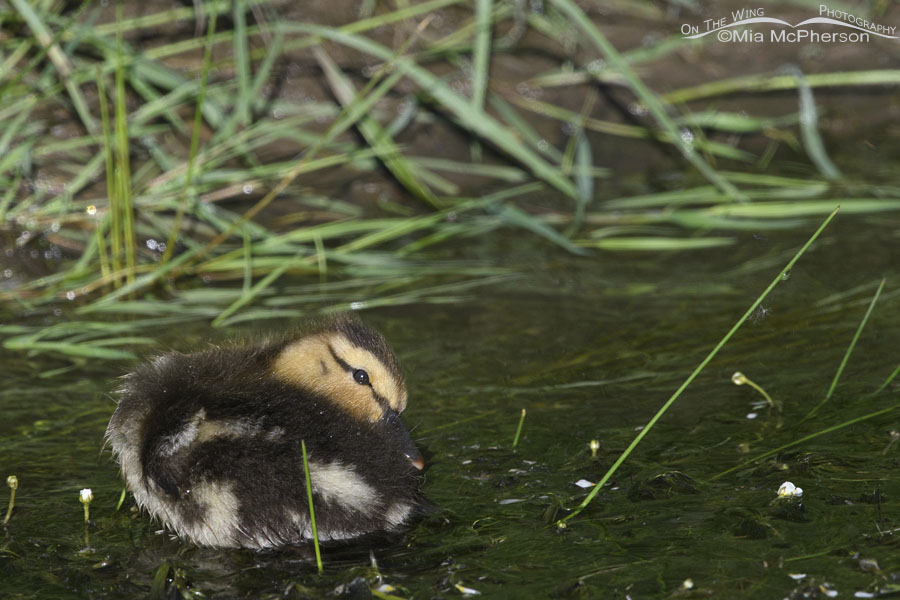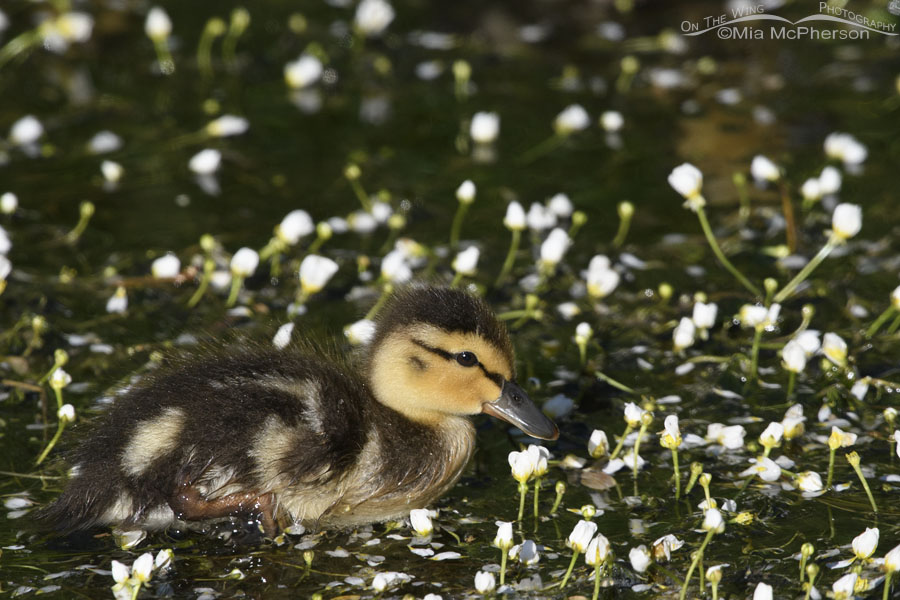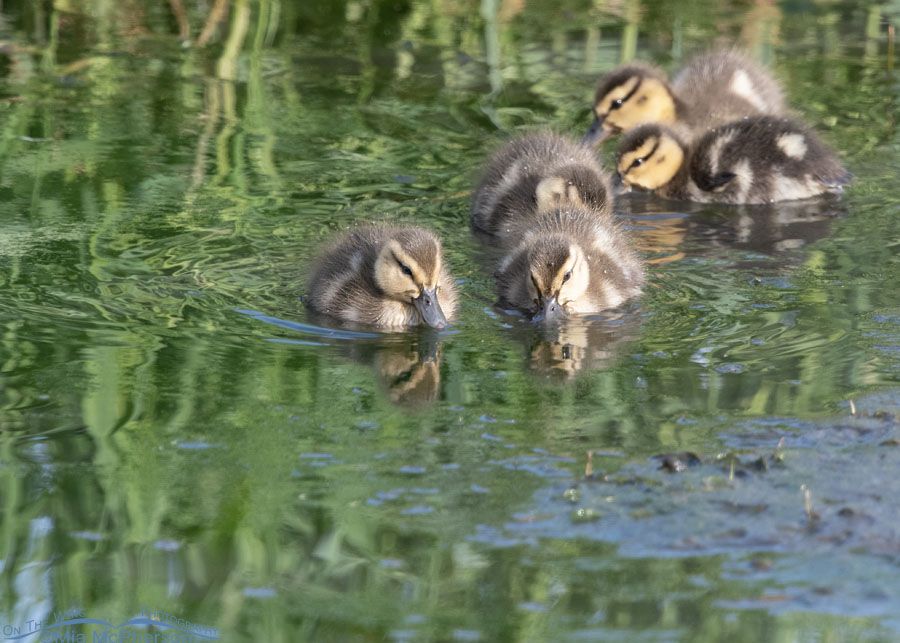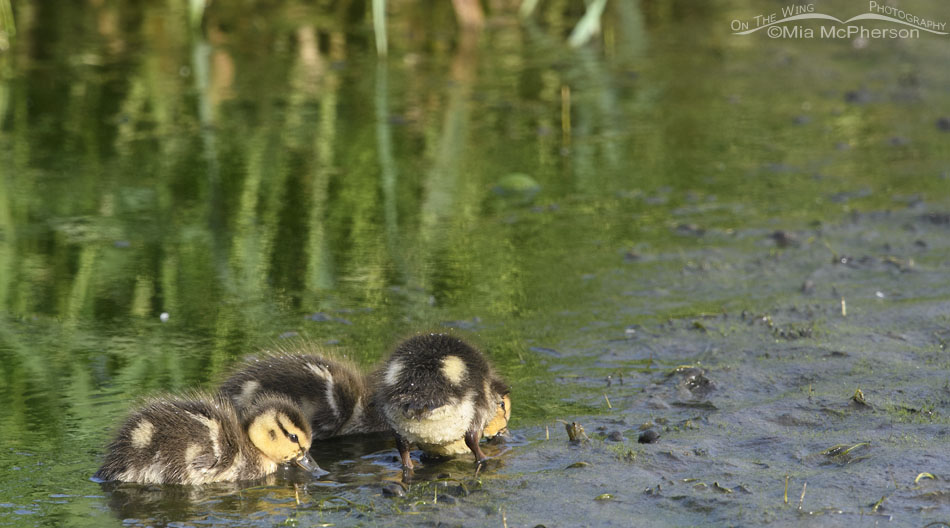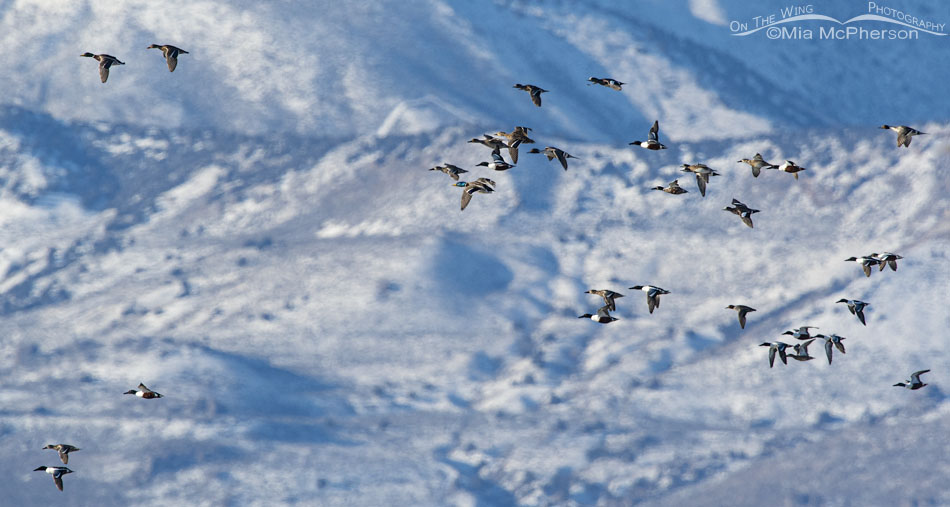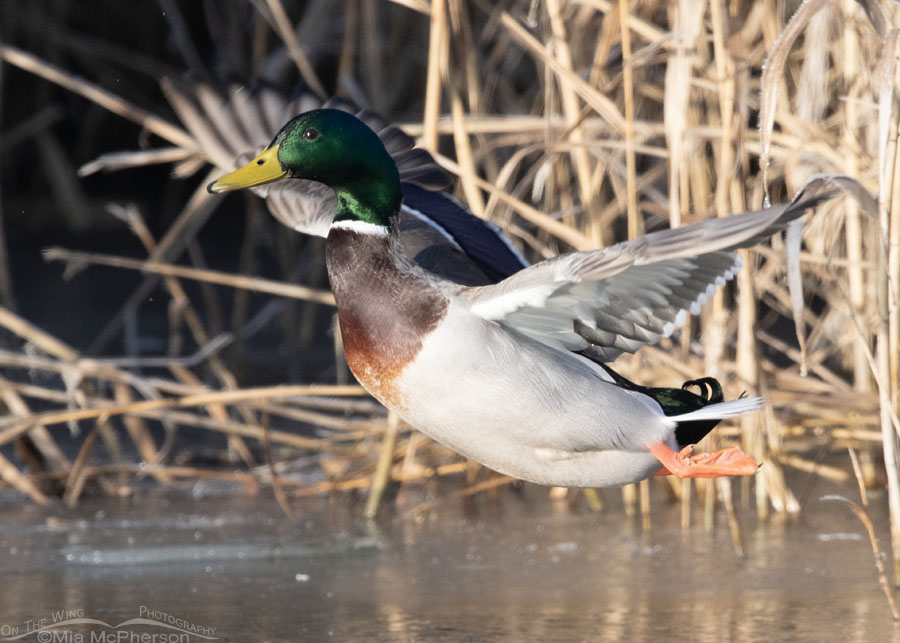
Mallard Images, Facts and Information:
Anas platyrhynchos
- Mallards are large, dabbling ducks with rounded, large bodies, wide bills and rounded heads. Males are more colorful than the females.
- Mallards are probably one of the most recognized ducks in the world, they are found in tropical and subtropical areas of North, South and Central America, Eurasia, Europe and North Africa. They have been introduced to other countries in the world which has caused problems with native ducks hybridizing with mallards.
- Mallard habitat includes, lakes, ponds, marshes, bogs, rivers, streams, reservoirs, city parks, estuaries, potholes, ditches and agricultural areas.
- Mallards eat seeds, aquatic vegetation, grains, earthworms, snails, insects, insect larvae and freshwater crustaceans like shrimp. They will also eat bread but it is bad for them and causes health issues.
- Mallards lay 5 to 14 eggs which hatch in 26 to 30 days. The female incubates.
- A group of mallards can be called a “doppling”, “daggle”, “lute” or “sword” of mallards.
- Mallards can live up to 29 years.
- Only female Mallards “quack”, males make a different, lower sound.
I hope you enjoy viewing my Mallard photos.
Drake Mallard resting on a snowy morning
Title: Drake Mallard resting on a snowy morning
Location: Salt Lake County, Utah
Date: 1/13/2024
Male Mallard watching me photographing him
Title: Male Mallard watching me photographing him
Location: Salt Lake County, Utah
Date: 1/13/2024
Male Mallard resting on snow
Title: Male Mallard resting on snow
Location: Salt Lake County, Utah
Date: 1/13/2024
Drake Mallard in flight on New Year’s Day
Title: Drake Mallard in flight on New Year’s Day
Location: Bear River Migratory Bird Refuge, Box Elder County, Utah
Date: 1/1/2024
Mallard drake lifting off from ice
Title: Mallard drake lifting off from ice
Location: Bear River Migratory Bird Refuge, Box Elder County, Utah
Date: 1/1/2024
New Year’s Day Mallard drake at Bear River MBR
Title: New Year’s Day Mallard drake at Bear River MBR
Location: Bear River Migratory Bird Refuge, Box Elder County, Utah
Date: 1/1/2024
Urban Mallard ducklings in grass
Title: Urban Mallard ducklings in grass
Location: Salt Lake County, Utah
Date: 5/8/2023
Baby Mallards in dappled light
Title: Baby Mallards in dappled light
Location: Salt Lake County, Utah
Date: 5/8/2023
Calling Mallard drake on an urban pond
Title: Calling Mallard drake on an urban pond
Location: Salt Lake County, Utah
Date: 2/7/2023
Mallard on a rock
Title: Mallard on a rock
Location: Salt Lake County, Utah
Date: 1/18/2023
Dapper Mallard drake in snow
Title: Dapper Mallard drake in snow
Location: Salt Lake County, Utah
Date: 1/3/2023
Hen Mallard on ice with a feather on her bill
Title: Hen Mallard on ice with a feather on her bill
Location: Salt Lake County, Utah
Date: 12/24/2022
Mallard hen on silky waters
Title: Mallard hen on silky waters
Location: Salt Lake County, Utah
Date: 12/17/2022
Drake Mallard reflections
Title: Drake Mallard reflections
Location: Salt Lake County, Utah
Date: 11/13/2022
Jordan River Mallard drake in low light
Title: Jordan River Mallard drake in low light
Location: Salt Lake County, Utah
Date: 10/19/2022
Mallard duckling preening in a creek with White Water Crowfoot blooms
Title: Mallard duckling preening in a creek with White Water Crowfoot blooms
Location: Wasatch Mountains, Summit County, Utah
Date: 6/26/2022
Mallard duckling swimming in White Water Crowfoot
Title: Mallard duckling swimming in White Water Crowfoot
Location: Wasatch Mountains, Summit County, Utah
Date: 6/26/2022
Native
Mountain Mallard babies in a creek
Title: Mountain Mallard babies in a creek
Location: Wasatch Mountains, Summit County, Utah
Date: 6/9/2022
Mallard ducklings feeding at the edge of a creek
Title: Mallard ducklings feeding at the edge of a creek
Location: Wasatch Mountains, Summit County, Utah
Date: 6/9/2022
Ducks on the wing over the marsh at Bear River MBR
Title: Ducks on the wing over the marsh at Bear River MBR
Location: Bear River Migratory Bird Refuge, Box Elder County, Utah
Date: 3/10/2022


